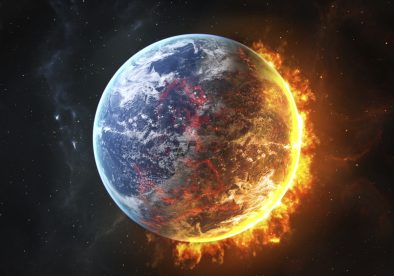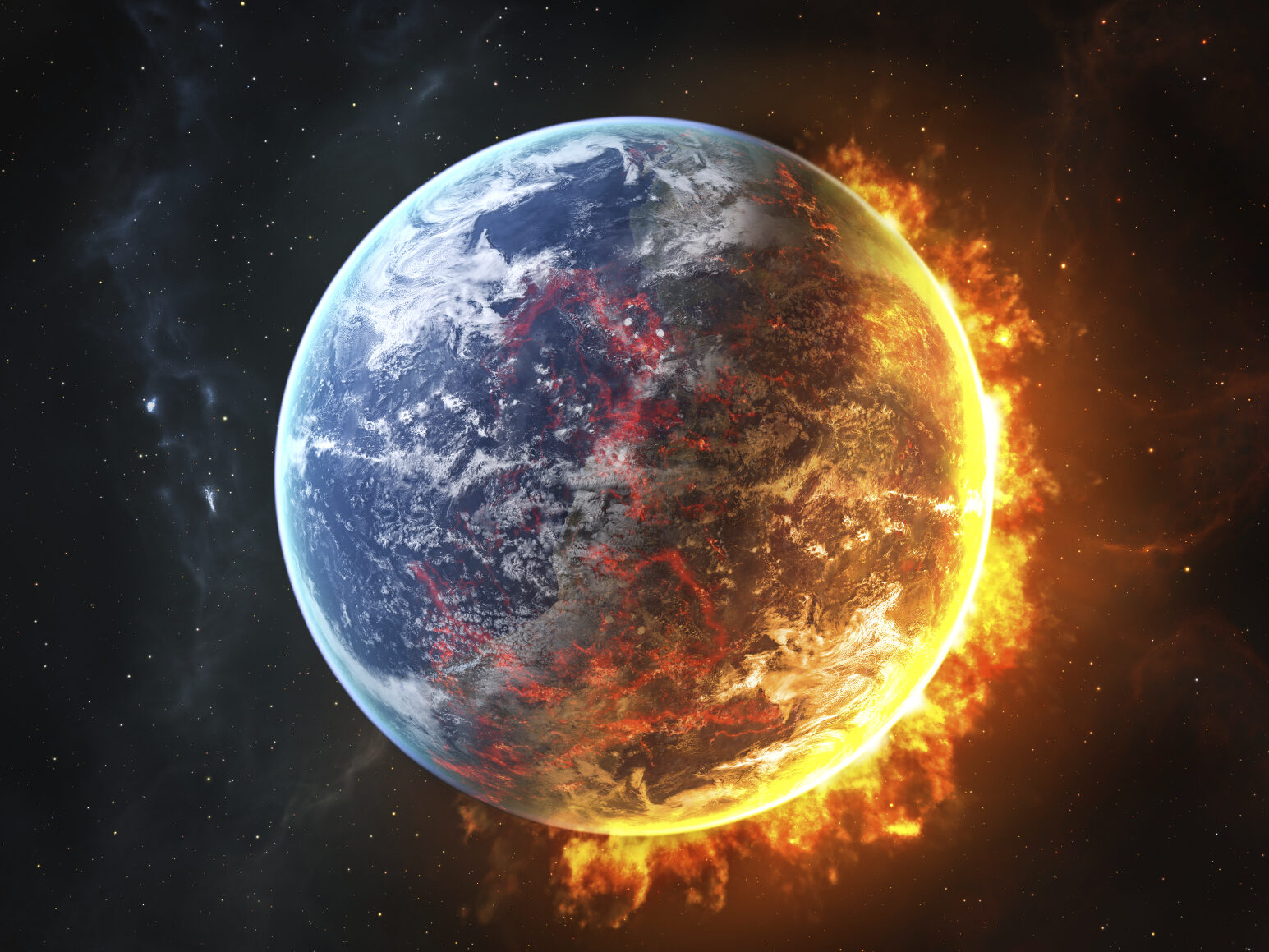Worldbuilding is an essential part of any science fiction or fantasy novel. Any world a story is set in has to feel real and believable to draw the reader in and make them feel they’re in the world of the book’s characters. With my current work in progress – The End-Times of Markusz Zielinski – I’m now embarking on the creation of my third ‘world’ to add to the deep space exploration/ climate catastrophe world of Horizon [see Planet Building] and the multiple worlds and alien species of The Lenticular Series [see The Art of Worldbuilding].
In End-Times the universe is being destroyed piece by piece – entire star systems collapsing together and vanishing in the blink of an eye. Future humanity has discovered the colony planet of Garia is likely to be the last planet affected by these collapses. This is the impetus for the Redout Project to gather together humanity and create a stronghold against impending doom.
But in order to write about Garia and what happens on it, I need to create it. End-Times plays with a number of themes around displaced people and refugees. Humanity is on nearly a thousand worlds in the future of the book, but I decided that Garia would not be an obvious choice for colonisation. In fact it would be passed over in favour of other more Earth-like planets. The colonists who eventually decided to terraform Garia would be unwanted refugees cast out from their homeworld by their own government before the current emergency surfaces. Five hundred years before End-Times begins, these colonists did the hard work to make Garia habitable. But when the importance of Garia as the last refuge of humanity was discovered, the original colonists found they suddenly had very little say in what was happening to the world they made. And so they resent the next influx of refugees, which leads to conflict.
From a practical point of view, the planet also needed to big enough to serve as a viable home for trillions of refugees coming from all over space fleeing the destruction of the universe.
With these two factors in mind, I hit up Wikipedia and opened a new spreadsheet in Excel.
I needed Garia to be inhospitable to humanity but fixable. A bit of searching around Wikipedia led me to consider F-type stars for Garia’s sun. According to Wikipedia these stars put out a lot more UV than our sun and the article also notes the habitable zone for orbiting planets, although whatever lives there would need to adapt to the UV. I also decided the atmosphere would be high in hydrogen. Both these factors mean Garia was passed over for colonisation in surveys but both could be fixed: the UV by solar shades placed in orbit around the planet and the excess hydrogen by atmosphere processors (meaning the colonists would need to live in pressurised domes for a couple of centuries before the atmosphere was breathable).
I also needed a BIG planet to take lots of refugees, but being bigger would generally mean having more gravity, unless I played around with some of the aspects of Garia’s planetary make-up, for example by making the planet less dense. This is where Excel came in handy to use the information we have about Earth to extrapolate the relevant numbers for the planet Garia:

As you’ll see from the above, Garia is a LOT bigger than earth but gravity is still a livable 1.19G.
After that I needed to consider the infrastructure in and around Garia that was necessary to create Redout, as well as think about the solar system that Garia is a part of. This leans more into imagination but the elements of it are still realistic.

Here’s a section of my current draft that explains it:
The Garian system is a lonely one, and not at all friendly.
The sun – HD68745 – runs hot and high in the UV range. So high that anything evolving in its so-called habitable zone had to grow shells or thick hide pretty damned fast to survive.
Seven of the eight planets that formed around HD68745 were smashed to pieces shortly after they coalesced from the dust cloud, falling prey to not one but three rogue, systemless planets that wandered through at just the wrong time, and leaving behind two debris fields:, the first extending in a circular orbit between six and ten light minutes from the sun and the second cluttering the space between forty-eight and seventy light minutes distance. Both belts contain no rock larger than a kilometre in diameter.
Garia was all that was left, orbiting eighteen light minutes from the sun with an atmosphere far too high in hydrogen for human life (not to mention the UV). Nearly four times the mass of Earth, it was only two-thirds as dense, the lithosphere containing nothing of interest in the way of rare metals.
Little wonder then that the M-Worlds automated survey barely paused in Garia’s vicinity before moving on.
And yet – with proper motivation, or very little choice, or both – there are those who will find a use for the useless. The Paradisan refugees who called themselves Garians as soon as they possibly could, put in the hard work. Many of them died. Over sixty per cent of the original settlers didn’t make it past the second year. They dug habitats with their bare hands, maintained atmosphere processors – already well past their serviceable life – with scavenged and hand-fabricated parts, grew and ate the single crop that refused to die in the alien soil and never once complained. Because they were free.
They pulled their cities out of the ground when the air was finally breathable, they built their parks, laid the foundation stones for their memorials and treasured the memories of those who had died so they could live. Perhaps that made them too prideful and ripe for punishment. Because the dream of free Garia died when Redout was born.
But anyone looking at Garia/ Redout now without the necessary context would see a confounding and wondrous place. A planet of soaring cities built across the land and above the oceans on massive pontoons. And cities that burrowed under the ground too: massive places that fooled the senses with their lightness and airiness so you forgot they were covered in planetary crust. To be sure there were less salubrious areas. Sprawling shanty towns on windswept plains with displaced people living in makeshift accommodation. But the constructor machines toiled on and surely it would not be long before everyone had a place they could call home?
Pull back from the surface and see the planet’s equator seemingly speared through by two beanstalk elevators, one on each hemisphere, piercing the clouds into space and providing supply lines for goods from out-system as well as supporting a double necklace of orbital habitats, ringing the planet with solar power generators and housing yet more refugees. Such a meagre world, transformed into surely the grandest of enterprises. Even the sun – under the ministrations of SolEng – becoming kindlier.
And there it is. The world of Garia/ Redout, ready to be a suitable backdrop for the action of End-Times.
“ASTEROID PLANET – digital-art” by Baltasar Vischi is licensed under CC BY-ND 2.0 .


